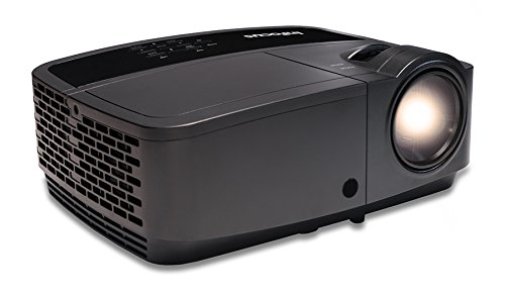Regardless of what you’re trying to sell, you really can’t sell it without “talking” with your prospective buyer. An in attempting to sell anything on the Internet, the sales letter you send out is when and how you talk to your prospect.
All winning sales letters “talk” to the prospect by creating an image in the mind of the reader. They set “the scene” by appealing to a desire or need; and then they flow smoothly into the “visionary” part of the sales pitch by describing in detail how “wonderful” life will be and, how “good” the prospect is going to feel after he’s purchased your product. This is the “body or guts” of a sales letter.
Overall, a winning sales letter follows a time-tested and proven formula: 1) Get his attention 2) Get him interested in what you can do for him 3) Make him desire the benefits of your product so badly his mouth begins to water 4) Demand action from him – tell him to click the right button or send for whatever it is you’re selling without delay – any procrastination on his part might cause him to lose out. This is called the “AIDA” formula (Attention, Interest, Desire and Action) – it works.
On your website, your sales page should be the length of what it would be if were doing a mailing, or longer if you’re using bullets to emphasize benefits to build the desire. Of course on the Internet you don’t have to worry about letterhead stationery or the cost of postage, which is a considerable savings. If, however, you want to also do a mailing campaign then the following would apply. The sales letters in mailings that pull in the most sales are almost always two pages with 1 1/2 spaces between lines. For really big ticket items, they’ll run at least four pages. – on an 11 by 17 sheet of paper folded in half. If your sales letter is only two pages in length, there’s nothing wrong with running it on the front and back of one sheet of 8 1/2 by 11 paper. However, your sales letter should always be on letterhead paper – your letterhead printed, and including your logo and business motto if you have one.
Regardless of the length of your sales letter, it should do one thing, and that’s sell, and sell hard! If you intend to close the sale, you’ve got to do it with your sales letter. You should never be “wishy-washy” with your sales letter. You do the actual selling and the closing of that sale with your sales letter – any brochure or circular you send along with in your mailing will just reinforce what you say in the sales letter.
Best Digital Marketing Approach for small and medium enterprise
There’s been a great deal of discussion in the past few years regarding just how long a sales letter should be. A lot of people are asking: Will people really take the time to read a long sales letter? The answer is a simple and time-tested yes indeed! Surveys and tests over the years emphatically prove that “longer sales letters” pull even better than the shorter ones, so don’t worry about the length of your sales letter – just make sure that it sells your product for you!
The “inside secret” is to make your sales letter so interesting, and “visionary” with the benefits you’re offering to the reader, that he can’t resist reading it all the way through. You break up the “work” of reading by using short, punchy sentences, underlining important points you’re trying to make, with the use of sub-headlines, indentations and even the use of a second color, and leaving lots of white space around it. On your website, the sales letter should run down the middle of the page so the viewer doesn’t have to keep adjusting the screen to see the whole sentence. This is very distracting and more apt to send that client to another website than losing patience reading a long letter.
Relative to the brochures and circulars you may want to include in your mailing with your sales letter – providing the materials you’re enclosing are of the best quality, they will generally reinforce the sale for you. But, if they are of poor quality, look cheap and don’t compliment your sales letter, then you shouldn’t be using them. Another thing, it will definitely classify you as an independent home worker if you hand-stamp your name/address on these brochures or advertising circulars instead of having them printed.
Whenever possible, and so long as you have really good brochures to send out, have your printer run them through his press and print your name/address – even your telephone number and company logo – on them before you send them out. The thing is, you want your prospect to think of you as his supplier – the company – and not as just another independent entrepreneur. Sure, you can get by with less expense but you’ll end up with fewer orders and in the end, less profits.
E-mail Marketing and Issues Surrounding it-SMEs
Another thing that’s been bandied about and discussed from every direction for years is whether to use a post office box number or your street address. Personally, I don’t like Post Office Boxes in a business address – because it transmits an aura of instability or temporary location. If your business is run from home, get a mail box from a post box vendor that has a street address. Then your address looks like, 1234 Willow Lane, #567, Your Town, and the box number could appear to the reader as a Suite number. However, if you live in a remote area where your address is 7890 Main St., RFD 42, Box 123, Your Town, then you have no choice but to include both your post office box number, AND, your street address on your sales letter. When doing it strictly for your website, put your street address, telephone number, and email address at the bottom of the page. More than likely, the customer will contact you by email, but it conveys dependability if that Internet buyer sees that you’re willing to give your address. This kind of open display of your honesty will give you credibility and dispel the thought of you being just another “fly-by-night” mail order company in the mind of your prospect.
Above all else, you’ve got to include some sort of ordering page or coupon if you’re mailing. The coupon has to be as simple and as easy for the prospect to fill out and return to you as you can possible make it. The order page on your website should already be filled out, with perhaps just the shipping left to choice. If your product is an eBook or software to be instantly downloaded, then you don’t have any options to be chosen. A great many sales are lost because this order coupon is just too complicated for the would-be buyer to follow. Don’t get fancy! Keep it simple, and you’ll find your prospects responding with glee.
Should you or shouldn’t you include in your mailing a self-addressed reply envelope? There are a lot of variables, as well as, pros and cons to this question. Overall, when you send out a “winning” sales letter to a good mailing list, a return reply envelope will increase your response tremendously.
4 Elements You Need to Include in Your Online Marketing Campaigns
Tests of late seem to indicate that it isn’t that big a deal or difference in responses relative to whether you do or don’t pre-stamp the return reply envelope. Again, the decision here will rest primarily on the product you’re selling and the mailing list you’re using. Our recommendation is that you experiment – try it both ways – with subsequent mailings and decide for yourself from there.







